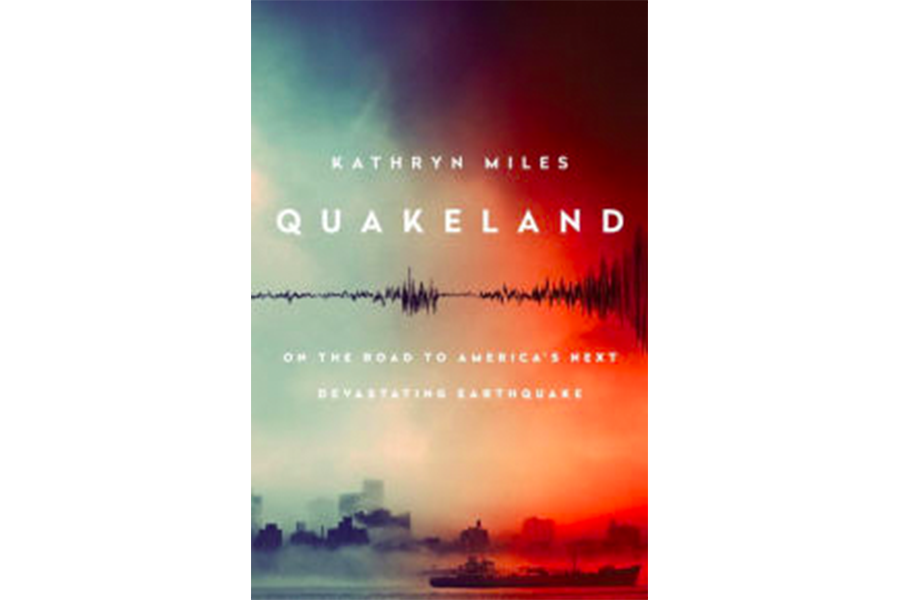'Quakeland' author Kathryn Miles on why there's a lot more shaky ground than we realize
Loading...
Kathryn Miles, author of the fascinating and frightening new book Quakeland: On the Road to America's Next Devastating Earthquake, hopes to shake up our perceptions about earthquakes with a startling reality check: There's a lot more shaky ground than we realize.
On trips around the country, Miles learned that Boston and New York City face major threats from quakes, as do Memphis, St. Louis and Salt Lake City. In the 19th century, a devastating quake hit Charleston, S.C., of all places. And, as we've learned in recent years, earthquakes linked to the fracking process are spawning quakes in Oklahoma.
"I went in with the same naiveté that other Americans have that quakes are a West Coast problem," Miles says in an interview with the Monitor. "We're finding that they're happening everywhere, and the overwhelming majority happen on faults we didn't know about."
But we're far from helpless, she says, and there's much more we can do to protect ourselves.
Q: I live in San Diego, where the ground shakes on occasion, and your book scares the heck out of me. Thanks a lot!
Seriously, was your intent to frighten the socks off people?
As a storyteller, I think drama and suspense are what's important because that compels us to action. I'm never sad if I've evoked emotion. And fear is healthy when approaching anything having to to do with nature and, especially, natural disaster.
But fear can paralyze and disable us too.
The right response is to use that fear to motivate vigilance and preparedness.
Q: What are some parts of the country whose high earthquake risks surprised you?
FEMA's major concern is the New Madrid fault in the Midwest [along the Mississippi River between St. Louis and Memphis]. So much of our commerce and trade depends upon Memphis, crossing through on the interstate or using the airport, whose major clients include FedEx, the Post Office and the military.
Another big site of concern is the Northeast. New York City is well overdue for a moderate earthquake that would create more rubble than 9/11. Not only is the earthquake hazard real there, the potential risk for the public is bigger because of the population.
California is doing some really great work to retrofit and mitigate risk in places like schools, hospitals, and apartment buildings. But we don't see that kind of response in places like Boston, New York, and St. Louis.
Q: What are some of the major things you learned about quakes?
One of the surprises for me was how little is known about what happens deep inside the earth. We know very little about what causes earthquake to happen, but we know it has to do with pressure and how the earth responds.
Still, as technology increases, our ability to figure out where quakes happen is increasing.
We're also learning how good we are at setting off earthquakes in unusual places through everything from building dams and reservoirs to building high rises.
Q: We hear about how fracking causes earthquakes, but the problem seems to really be the way that companies "inject" wastewater back into the earth. Why is that dangerous?
It's like when I was a kid and put a can of Pepsi in the freezer and was surprised when it exploded. That's an analogy to what's happening with wastewater injection.
Water being injected at force creates pressure, and it increases or decreases pressure in places that are already under load.
Q: What makes earthquakes unique in terms of the mental health of survivors?
Even with a tornado, we often get 5- to 10- to 20 minute warnings that let people get to the basement. The sheer surprise and shock of an earthquake can be very difficult for people. Researchers are finding incidents of trauma and post-traumatic stress disorder, depression and suicide.
Q: Other than strengthening buildings and preparing ourselves for quakes, what else should we be doing?
It's remarkable to me how many countries, both first world and developing like Mexico, have earthquake warning systems. They can give people minutes' notice that an earthquake is coming, and that's more than enough time to get somewhere safe.
We have the technology here, and we have some really talented scientists who are working on that front. But we haven't funded them, so we don't have the money to make that technology. That's something that we can decide as a country to do tomorrow.
Q: What message do you want to leave with readers?
As a culture, we like to play the odds and think it's unlikely it will happen here. That's a false security.
The hazard is real, and this country is going to have a major earthquake. It could be Salt Lake City, Seattle, Los Angeles, Washington D.C., or New York.
The real aim of this book is a call to action, a call to arms. It's really up to us to take action to minimize any potential damage and casualties.
If I scare readers into taking steps to keep themselves and their families safe, that's OK with me.







